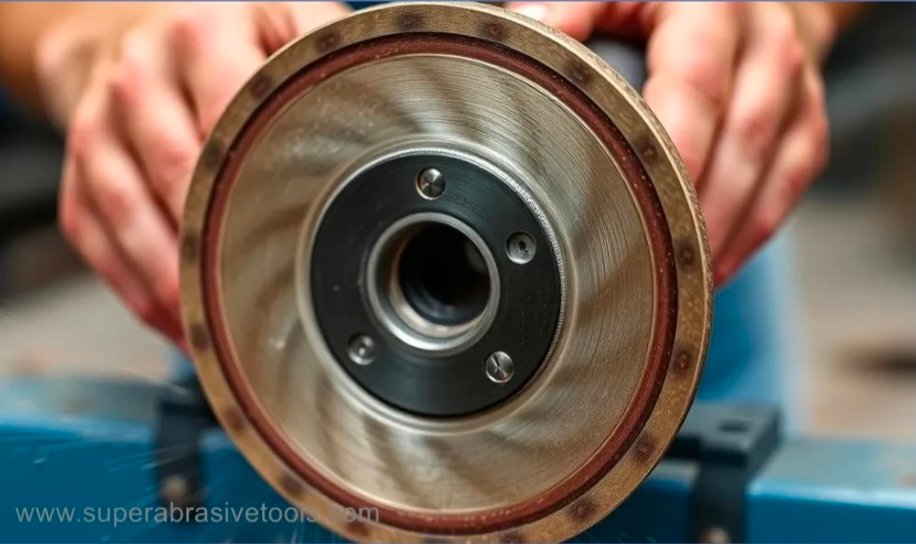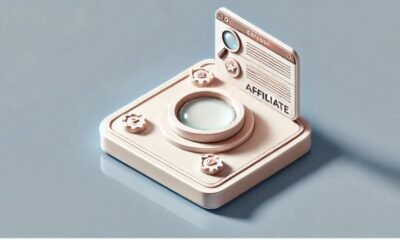Business
Diamond Carbide Grinding Wheel: Maintenance Tips & Tricks

Introduction
Diamond carbide grinding wheels deliver exceptional precision and durability when machining hard materials like tungsten carbide, ceramics, and hardened steel. Proper maintenance ensures longer life, consistent performance, and optimal grinding efficiency. This guide offers professional care tips and proven methods to help you maximize the performance and lifespan of your diamond carbide grinding wheels.
What Makes a Diamond Carbide Grinding Wheel Special?
Diamond grinding wheels are crafted using industrial-grade diamond grits bonded with resin, metal, vitrified, or electroplated materials. They are specifically designed to handle carbide tools, which are extremely hard and wear-resistant.
Unlike conventional aluminum oxide or silicon carbide wheels, diamond abrasive wheels offer:
- Superior hardness (10,000 HV+ on the Vickers scale)
- Excellent wear resistance
- High grinding precision with minimal heat generation
- Extended wheel life and consistent cutting performance
According to Machinery Industry Research 2024, the use of diamond wheels for carbide tool sharpening can improve productivity by up to 30%, while reducing dressing frequency by over 40% compared to conventional abrasives.
Why Maintenance Matters for Diamond Grinding Wheels
A well-maintained diamond cutting wheel not only lasts longer but also ensures:
- Consistent surface finishes
- Reduced thermal damage to carbide tools
- Better form retention and edge integrity
- Lower operational costs and downtime
Neglecting maintenance leads to glazing, clogging, and uneven wear, all of which severely affect grinding precision. Maintenance, therefore, isn’t just about cleaning—it’s a systematic process of dressing, truing, and conditioning.
1. Regular Cleaning: The Foundation of Wheel Longevity
How to Clean a Diamond Carbide Grinding Wheel
Cleaning removes debris, metal chips, and bonding residues that accumulate on the wheel surface. These residues reduce cutting efficiency by blocking the diamond grains.
Best Practices:
- Use a Diamond Wheel Dresser:
A diamond dresser restores the wheel’s surface by removing clogged material and exposing new diamond grains. Run the dresser lightly across the wheel face at regular intervals. - Apply a Cleaning Stick:
A silicon carbide cleaning stick or aluminum oxide stick works well to unclog resin or metal-bonded diamond wheels. Hold the stick firmly against the wheel under moderate pressure. - Use Coolant During Cleaning:
Always apply a proper coolant to wash away removed particles and prevent overheating. Water-soluble coolants or specialized grinding fluids are ideal for carbide tool applications. - Avoid Harsh Solvents:
Never use acidic or oil-based solvents, as they can damage the wheel bond or cause micro-fractures on the diamond surface.
2. Truing and Dressing: Keeping the Wheel in Shape
What’s the Difference Between Truing and Dressing?
- Truing: Restores the geometric shape of the wheel to eliminate runout or deformation.
- Dressing: Removes worn or clogged abrasive grains to refresh the cutting surface.
Regular dressing ensures the wheel remains sharp and efficient. In high-precision applications such as CNC tool grinding, dressing may be needed after every 2–3 hours of use, depending on material hardness.
Expert Tip:
Use a rotary diamond dresser for vitrified or metal-bonded wheels—it provides uniform dressing and extends the wheel’s life.
3. Proper Storage and Handling
Incorrect storage can degrade the bonding material and affect wheel balance.
Storage Guidelines:
- Store wheels in a dry, vibration-free environment.
- Avoid stacking or placing heavy objects on top of the wheel.
- Keep the wheel away from direct sunlight or excessive humidity.
- Label wheels by material and grit size to prevent misuse.
According to Industrial Grinding Journal (2023), improper storage conditions account for nearly 12% of premature wheel failures in small manufacturing setups.
4. Maintain Correct Operating Conditions
A grinding wheel performs best when operated within its designed parameters.
Key Parameters to Watch:
- Grinding Speed (m/s): Follow manufacturer recommendations. For most diamond carbide wheels, optimal speed ranges between 25–35 m/s.
- Feed Rate: Avoid excessive feed rates that cause wheel glazing.
- Coolant Flow Rate: Ensure sufficient flow to maintain consistent temperature and chip removal.
- Wheel Alignment: Check spindle runout and wheel balance before each operation.
Quote from a Precision Grinding Expert:
“Most wheel wear issues aren’t caused by the wheel itself—it’s improper machine settings or coolant flow. Fine-tuning parameters can extend diamond wheel life by up to 50%.”
— Mark Ellison, Senior Engineer, Precision Tool Systems Inc.
5. Inspect Wheel Wear and Damage Regularly
Even the best wheels eventually wear down. Inspect regularly for:
- Cracks or chips on the rim
- Uneven wear or vibration during operation
- Discoloration (signs of overheating)
Replace immediately if damage is detected. Running a compromised wheel can lead to surface burn, poor accuracy, or even machine damage.
For professional-grade, replacement-ready options, SuperAbrasive offers a full series of diamond and CBN grinding wheels engineered for extended service life and superior balance. Learn more at www.superabrasivetools.com.
6. Optimize Coolant and Lubrication Use
Coolant acts as both a heat regulator and chip remover. Inadequate lubrication accelerates diamond grain wear and bond degradation.
Recommendations:
- Always filter and recycle coolant to avoid debris circulation.
- Use coolant nozzles aimed precisely at the grinding zone.
- Maintain coolant temperature below 30°C to ensure stable grinding performance.
Research by The Journal of Manufacturing Science (2022) found that optimized coolant delivery can reduce diamond wheel wear by up to 35%.
7. Know When to Replace the Wheel
A wheel should be replaced when:
- Cutting efficiency drops noticeably.
- Dressing no longer restores sharpness.
- The wheel diameter falls below the manufacturer’s minimum limit.
Continuing to use an over-worn wheel risks burning carbide surfaces and increasing tool regrind costs.
Conclusion
A diamond carbide grinding wheel is a long-term investment in accuracy, performance, and productivity. Your wheel’s efficiency ultimately relies upon consistent maintenance which includes periodic cleaning, truing, dressing, and correct coordinating operating practices.
Applying any of the above expert tips can help to increase your wheel’s life, improve grinding performance, and reduce total machining cost. For a complete line of diamond grinding wheels, CBN wheels and professional service, please review the full line SuperAbrasive offers.
-

 Tech1 year ago
Tech1 year agoHow to Use a Temporary Number for WhatsApp
-

 Business2 years ago
Business2 years agoSepatuindonesia.com | Best Online Store in Indonesia
-

 Social Media1 year ago
Social Media1 year agoThe Best Methods to Download TikTok Videos Using SnapTik
-

 Technology1 year ago
Technology1 year agoTop High Paying Affiliate Programs
-

 Tech10 months ago
Tech10 months agoUnderstanding thejavasea.me Leaks Aio-TLP: A Comprehensive Guide
-

 FOOD12 months ago
FOOD12 months agoHow to Identify Pure Desi Ghee? Ultimate Guidelines for Purchasing Authentic Ghee Online
-

 Instagram3 years ago
Instagram3 years agoFree Instagram Auto Follower Without Login
-

 Instagram3 years ago
Instagram3 years agoFree Instagram Follower Without Login




















